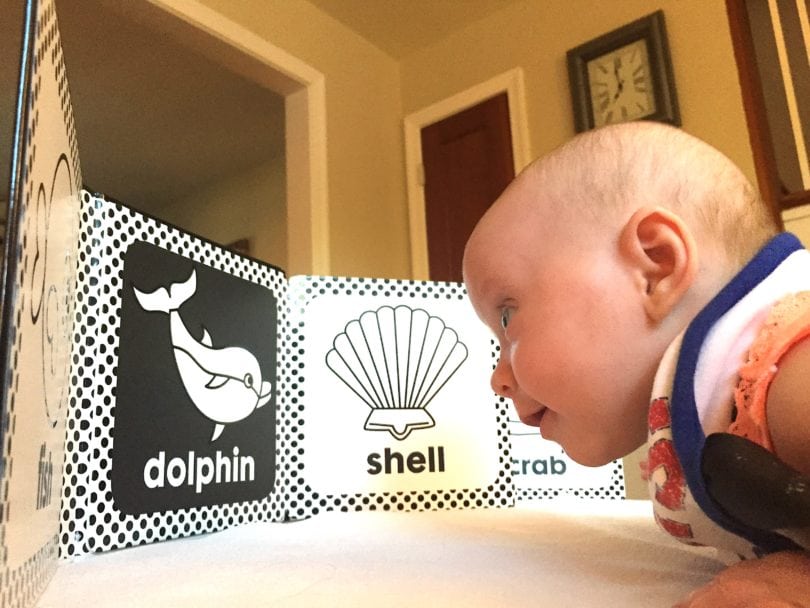
Breaking the Container Baby Syndrome with Tummy Time
By Kimberly Bradley, MS, LOTR
Tummy time continues to be an activity pushed by pediatricians as babies are spending less time on their tummies and more time in containers such as car seats, strollers, bumbo seats, bouncy swings, etc..
It is such a common problem that physical therapists have coined the term ‘Container Baby Syndrome’. Containers definitely do their job at keeping babies safe, but are causing babies to spend less time on their bellies exploring and building strength.
Tummy time not only plays a crucial role in developmental milestones such as crawling and walking, but it’s important in building core and upper body strength and for developing efficient fine motor coordination, pencil grasp, and eye-hand coordination. Tummy time also aids in improving digestion, visual tracking, and respiration by building head and neck control. Studies have shown that babies who spend little to no time on their stomachs have noticeably delayed milestones when compared to babies who spent as little as 15 minutes, two times per day in tummy time.
Your infant should start tummy time as early as their first three weeks of life. Primitive reflexes are already present at that time that allow your baby to lift her head off of the floor and breathe without difficulty. Tummy time aids in outgrowing these primitive reflexes so your baby can use her own strength, which then results in more normal patterns of movement.
When awake, a three-month-old baby should be spending at least an hour of his day on his belly. You can start working toward that goal by aiming for a few minutes, or even seconds, at a time and try to build up to 30 minutes of tummy play time. Tummy time milestones include propping up on forearms progressing to pushing up onto hands. Your baby should also be reaching out for toys and lifting her arms and legs up while her belly is on the surface.
If you are finding tummy time a challenge, try some of these strategies:
-use any reclined surface to rest your baby’s belly on, such as on your chest.
-try using an exercise ball as well.
-roll up a small towel or Boppy pillow for support under baby’s chest.
-place favorite toys in front of your child during tummy time.
-limit time spent in containers.
-be face to face with your baby on the floor.
-activity play mats and water-filled play mats are a fun and engaging option.
-try holding your baby in your arms with tummy down, like an airplane, while carrying him.
-place fun sensory toys, such as sensory water bottles in front of your baby.
-set a schedule for tummy time, such as after naps or diaper changing.
-avoid tummy time right after eating.
-aim for a goal, such as 3-5 times per day.
-try rubbing your baby’s back if she becomes fussy during tummy time.
Using these tips, and being mindful of tummy time vs. container time can help you reach your baby’s goal of an hour a day on their tummy. Carefully watch time spent in containers and consciously try to have your baby spend more time on their belly. Remember, back to sleep and tummy to play!

Kimberly Bradley is a licensed pediatric occupational therapist who writes our column, “Wiggle Room.” Kim4Kids, LLC, 504.517.5437, kim4kidsnola.com.

